NPK: What Is The Best Ratio For Growing Cannabis

Perhaps you’re new to cannabis cultivation, or just struggling with macronutrient deficiencies. Maybe it’s overfertilisation that’s spoiling your marijuana. Whatever substrate you use to grow cannabis, plants need the right nutrients, at the right time. Eliminate the doubt and subpar harvests with our NPK intel.
Feeding cannabis plants might seem like an easy task. However, poor feeding regimens are one of the most common issues faced by novice growers. Moreover, it may surprise you to hear that overfeeding, rather than underfeeding, occurs more often.
But knowledge is power. Understanding the necessary NPK ratios for the different stages of a cannabis plant’s life cycle will give you the tools to optimise the health and yield of your crop.
Simple Guide to NPK Fertiliser Ratios for Marijuana
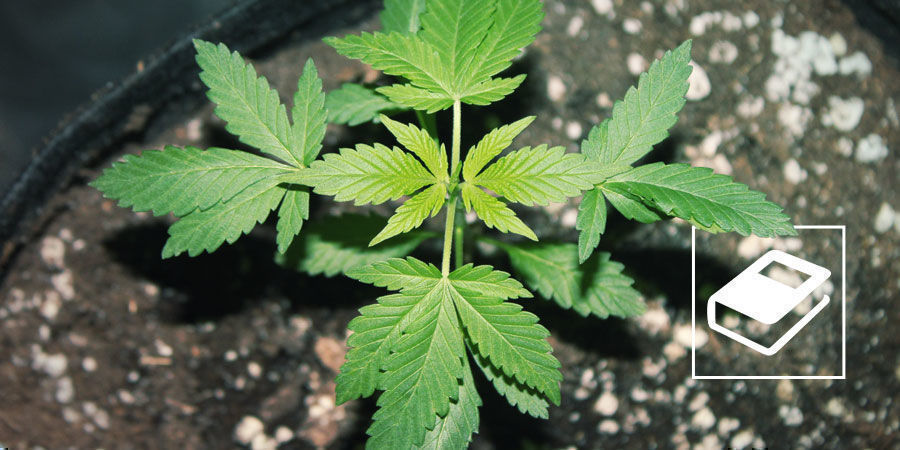
Nutrients are a critical factor of cannabis cultivation. The trio of macronutrients—nitrogen (N), phosphorus (P), and potassium (K)—are the fuel that marijuana (and most other plants) use to grow.
NPK base nutrients cannot be applied in the same ratio for the complete cannabis life cycle. Depending on which processes the plant is devoting energy to, the required concentrations will differ.
For more information on what each nutrient actually does for the cannabis plant, see the Details per Nutrient section of our cannabis grow guide.
Cannabis NPK Fertiliser Ratios According to Stage of Growth
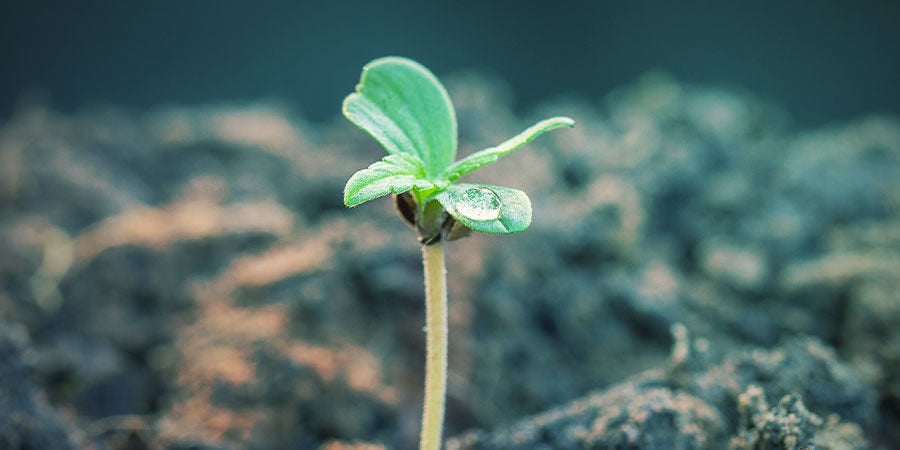
Fertilisation is not as simple as just pouring nutrients into the substrate and watching your plants flourish. For optimal results, different stages of a cannabis plant’s life cycle require a different NPK ratio.
Seedling Stage
Although this stage presents many challenges, fertilisation is not one of them. Any good soil should contain everything a seedling needs to flourish, and trying to fertilise it is more likely to send it to an early grave than help it.
Don’t be overzealous at this stage; it needs to be left mostly alone!
Vegetative Stage
Once the plant has entered the vegetative stage, it will begin to crave nutrients. During veg, cannabis requires an NPK ratio of 3:1:1. However, that does not necessarily mean you want to feed it with a fertiliser with that ratio.
In fact, most soils come packed with nitrogen—enough to last for at least the first 4 weeks of vegetative growth—so you’ll want to go about reconfiguring your nutrient solution based on the current NPK ratio of the substrate.
A slight nutrient deficiency is greatly preferable to too much, so always err on the side of caution. If you’ve got good soil, it’s likely that a fertiliser with a 1:1:1 ratio will suffice. Simply put, that means there are equal quantities of each macronutrient.
Flowering Stage
As cannabis plants transition from veg into the flowering stage, macronutrient requirements swing in the opposite direction. That means you need to switch to bloom base nutrients and adjust the NPK ratio.
A highly effective NPK ratio is 1:3:2 for early to mid-bloom, followed by 0:3:3 for the late flowering stage. Add a final flush of pure water and/or light flushing solution during the final week for flavour. Then, it’s time to harvest.
P & K dictate the quantity and size of your buds, respectively. Thus, tapering off nitrogen levels while simultaneously increasing P & K is the primary grower objective. Too much nitrogen late in bloom spoils the sinsemilla. Buds will taste harsh and just won’t smoke as smoothly as a thoroughly flushed stash. Leave out the nitrogen altogether for the final 20–30 days.
Organic vs Synthetic NPK Fertiliser
.jpg)
Whether knowingly or unknowingly, you will at some point make a choice between using organic or synthetic fertiliser for your grow-op. Not only is there an environmental difference, but the plants themselves are affected too.
So which do you choose?
Benefits of Organic Fertiliser
Organic fertilisers come with a few advantages over synthetic:
- No toxic runoff
- Support a healthy environment in the soil
- Absorbed more slowly by your plants
- Lower chance of nutrient burn/lockout
- Potentially very cheap or even free if you decide to make your own
- Absorption versatility: Granular fertilisers (such as compost, manure, etc.) are absorbed slowly by the plant. On the other hand, liquid feeds are more readily available and can be absorbed quickly, especially when applied as a foliar spray.
Given those points, organic fertilisers make your grow significantly more sustainable. Not only this, the likelihood of nutrient lockout is reduced when using organic nutrients to feed your cannabis plants.
Benefits of Synthetic Fertiliser
Synthetic fertilisers exist for a reason, and they have some advantages over organic solutions:
- Speedy absorption
- Exact nutrient ratios
- Easily accessible/cheap
Synthetic fertilisers contain, in virtue of being human-made, exact ratios of NPK. This allows growers finer control over their feeding regimen. That said, unless you know the exact nuances of the strains you are growing, you’ll be unable to feed it the perfect ratios anyway, making this somewhat of a moot point for most growers.
The fast absorption rate makes synthetic fertilisers more suited to tackling nutrient deficiencies, but comes with the downside of being more likely to cause nutrient lockout.
How To Use NPK Fertiliser To Grow Cannabis
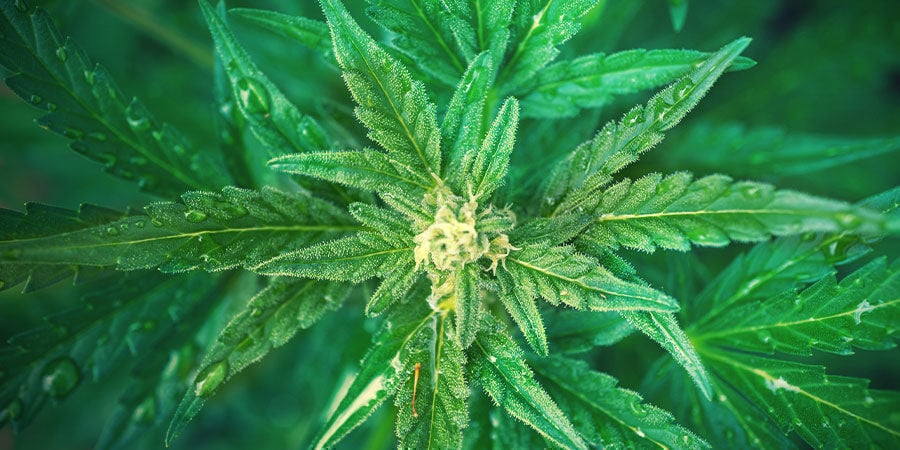
As mentioned, soil growers need not administer fertiliser during the seedling stage. Typically, adding beneficial microorganisms and enzymes is enough. These will help roots develop and make nutes in the soil readily available.
Some strains, especially indica varieties, tend to respond better to higher doses of fertiliser; the more sativa present usually corresponds to lower nutrient requirements. Hybrids occupy the middle-ground, with some leaning toward a preference for lighter or heavier doses.
Hands-on grow room experience with a particular cannabis strain is really the only way to know for sure.
Heavy feeding—i.e. administering full-strength doses of cannabis nutrients accompanied by timely doses of bloom boosters—can work wonders for yields, but only if you have a strain with a proven affinity for an intense feeding regime. Instead, try to adopt a feeding schedule with an objective of dosing nutrients to just the right amount.
Anyone that’s ever tried to “juice” bunko marijuana with boosters and potions can tell you that you’re wasting your time and money. Genetics will chiefly determine how potent and how much of a stash you bring to harvest. Even if you do everything just right, you can, and likely will, still hit the ceilings dictated by genetics. Work up your feeds slow and steady, monitoring plant behaviour every step of the way. Sorry, no shortcuts for this one.
What Nutrients Do Autoflowering Cannabis Plants Need?
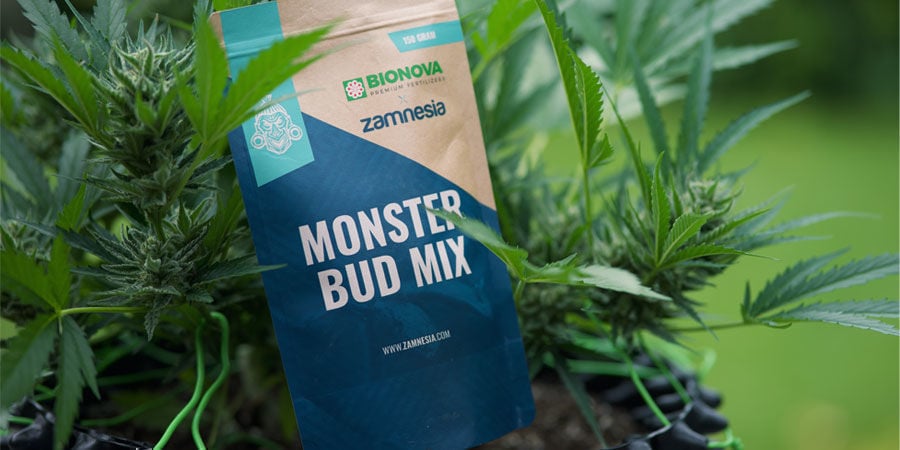
As autoflowering cannabis strains improve, more and more growers are turning to these specimens for quick and easy grows. But how do you feed autoflowering plants? What NPK ratios do autos need?
Due to the nuances of individual strains and the low nutrient requirements of ruderalis-rich plants, the jury is out on exactly how much autoflowering cannabis plants like to eat. However, it’s widely agreed that they require less than their photoperiod brethren.
Beginning with ½ or even ¼ of the amount of fertiliser suggested for a standard photoperiod plant is a good start. If, after a few feeds, you sense it is under-nourished, build up from there. Ruderalis plants are built to survive in hostile environments, and this makes them able to thrive on very little.
As for exact nutrient ratios for autoflowering strains, the best bet is to opt for the same ones you would for photoperiod plants, just reduce the overall amount.
Soil vs Hydroponics
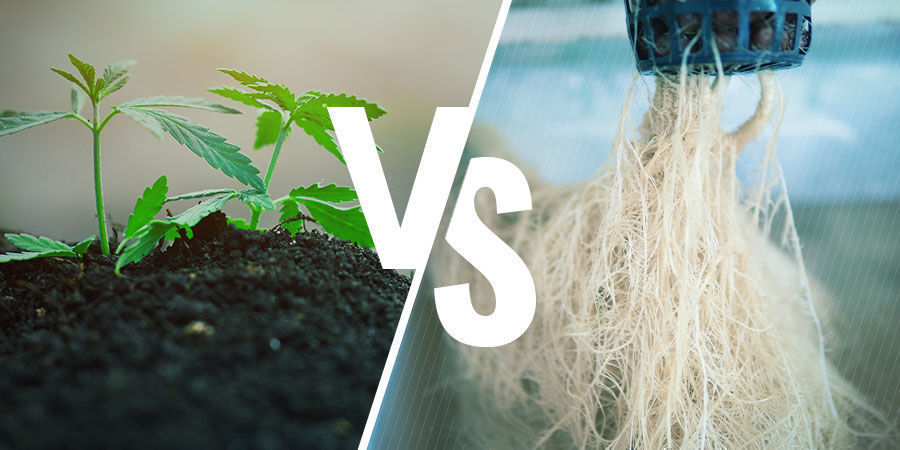
Growing cannabis in a hydroponic setup requires a slightly different approach to feeding.
The main thing to bear in mind is that the medium is inert. Unless you add fertiliser to it, the water doesn’t have any inherent ability to feed plants—unlike good soil. Moreover, while fertiliser is largely contained by soil, it isn’t in water (assuming the water is refreshed).
Given that, you’ll need to add fertiliser more often with a hydro grow. But as there is no soil buffer, you have to be extremely careful not to over-dose your plants. Plus, feeding begins during the seedling stage, at about 25% of the suggested feed.
Soil vs Coco Coir
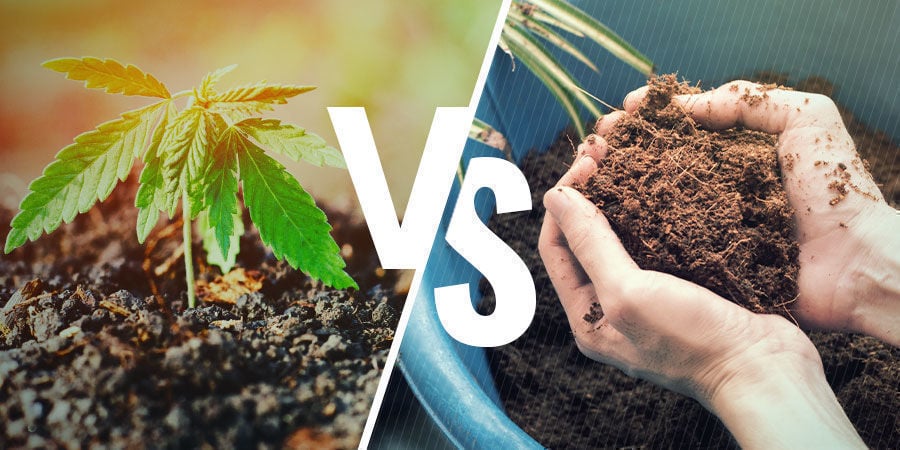
Coco coir is a similar story to hydroponics. Unlike soil, coco coir is not inherently rich in nutrients. Therefore, it may be necessary to begin adding fertiliser from the seedling stage. However, you must check your specific mix. While pure coco coir is inert, there are many coco coir mixes that are not, and that may in fact be very rich in nutrients. In this case, adding more could well kill a young plant.
The Importance of pH and Micronutrients
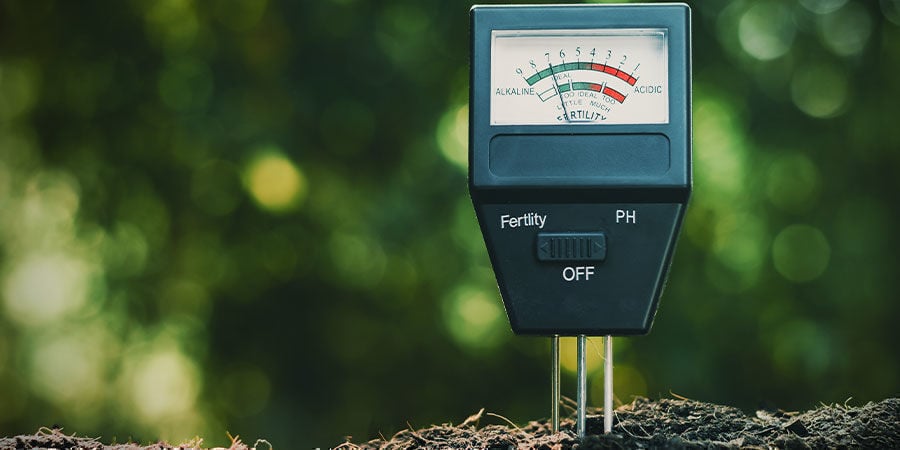
Macronutrients describe a plant’s basic NPK requirements, but cannabis needs many other nutrients as well. Micronutrients must also be blended into your cannabis feeding programme. Plus, for nutrients to be available to roots, the pH of the growing medium and the nutrient solution must be perfectly dialled in.
Silica may well be classed as a cannabis macronutrient in the future, as it plays the all-important role of thickening cell walls. Better still, silica has recently been linked to increased trichome production by North American professional growers.
Every name-brand of nutrients has a host of supplements to cover all the micronutrients. These will be the products with the 0.1, 0.2, etc. NPK ratios. High-grade soil should already contain most trace elements that cannabis needs. If not, you can always feed some molasses tea once a week.
It’s mostly coco and hydro growers that require the vast majority of these products. A good-sized bottle of Ca/Mg will be essential.
Don’t forget to maintain a pH of 5.5–6.0 for coco and hydro, and 6.0–6.5 for soil. Dial these levels in for every feeding. Either invest in a pH meter or pH-perfect nutrients to make sure. Now get to work on that bumper crop.
Spotting Problems With Cannabis NPK Ratio

If you grow a lot, it’s likely that you will, at some point, run into nutrient-related issues. Learning to spot these early is essential to reversing any problems and ensuring a good crop.
One point for newer growers: while it can be tempting to give your plants a whole load of feed, assuming they will grow more, this is probably the number-one cause of issues in novice grows. That, and overwatering. Plants tend to cope better with less, rather than more.
Nutrient Deficiency
If cannabis plants aren’t receiving enough feed, they may develop a nutrient deficiency. Another cause could be nutrient lockout (more on this shortly).
Signs of a nutrient deficiency are:
- Dry foliage
- Yellow or brown leaves
- Discoloured stems
On the whole, nutrient deficiencies are easy to solve: just feed them! Don’t overcompensate, though. Just increase their feed gently, and they will easily recover. They will not thank you for a sudden, huge dose.
Overfeeding
Overfeeding occurs mostly with synthetic fertilisers, as these are absorbed very readily by the plant.
Signs of overfeeding are:
- Burnt-looking leaves with yellow or brown discolouration
- Upward bent tips
- Burnt edges
To remedy this, it will take more than just stopping feeding. You will need to flush your soil with inert water until you’ve washed all the nutrients out. Then, you’ll need to rebalance the pH level and begin a new feeding schedule—with less fertiliser!
Nutrient Lockout
Nutrient lockout is a situation in which the plant’s roots are no longer able to absorb nutrients from the soil. This occurs when there are too many nutrients in the soil, or the pH balance is wrong.
Nutrient lockout manifests in the same symptoms as a nutrient deficiency. This makes it problematic, as the causes of these issues are very different. If you wrongly identify a deficiency and begin feeding it more, when in fact it’s nutrient lockout, you will do more harm than good.
Given this, treat them both in the same way: flush the soil first, rebalance the pH, and then begin feeding again. This will successfully treat both a deficiency and lockout.
Bottom Line: Don't Overdo It!
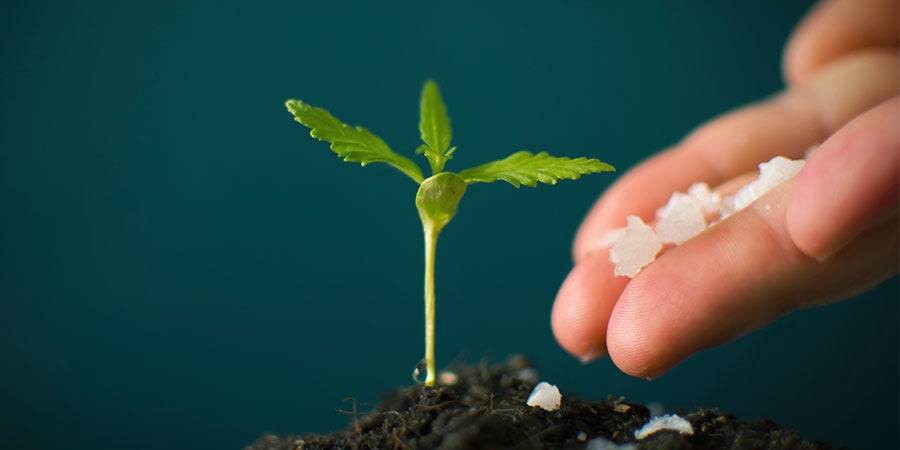
When it comes to feeding your cannabis plants, less is certainly more. As you can see, problems related to underfeeding are easily remedied and pose little threat to your plants' health—unless they are totally deprived for a long time. Overfeeding, on the other hand, presents a number of issues that are more difficult to solve, and that tend to cause greater damage to your plants.
Start low and slow, and learn to read your plants to gauge what they need. Not only will doing this help you give them everything that they need, but you will become a more skilled cultivator, and the act of growing will become infinitely more enjoyable.











 United States
United States








